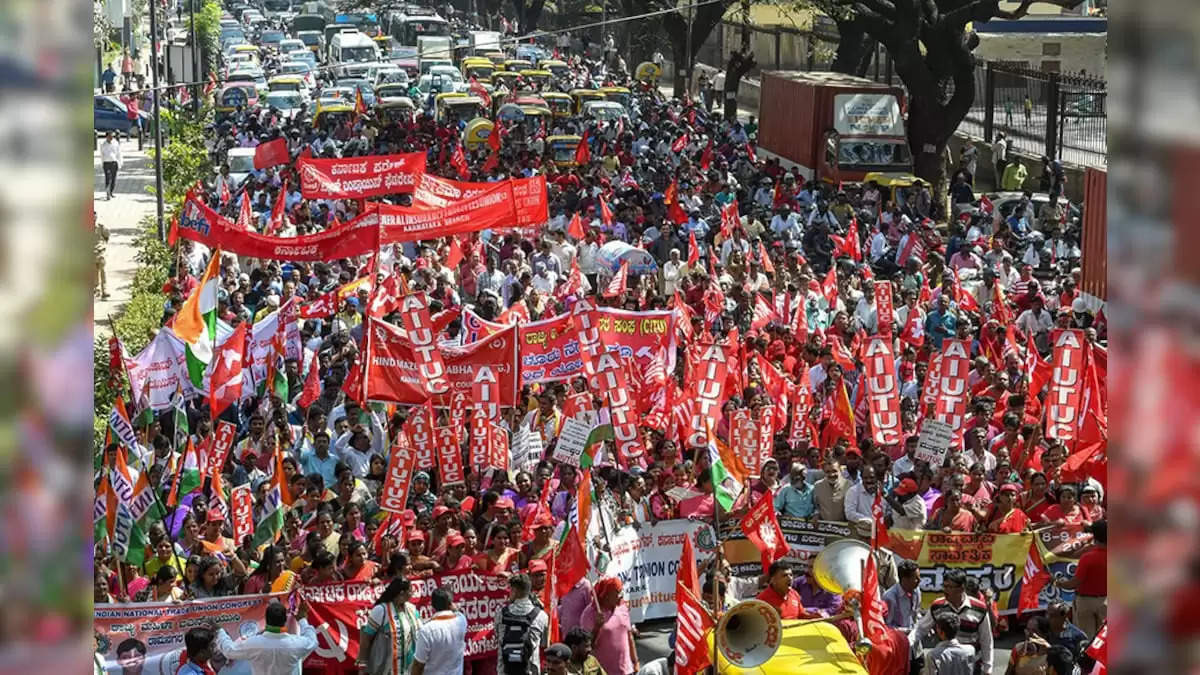The Bharat Bandh has entered its second day; banking and transportation services were only minimally disrupted on the first day.

The Bharat Bandh strike, India's first big protest after a crucial round of state elections, caused a partial interruption of banking and transportation services on Monday as the two-day agitation began. The 48-hour demonstration entered its second day on Tuesday, and the impact is expected to continue. The walkout has been organized by a group of trade unions who have expressed their displeasure with several government initiatives that they have labeled "anti-worker and anti-farmer."
As the two-day Bharat Bandh strike enters its second day, here are ten issues to consider:
- Delhi, Punjab, Haryana, Kerala, Odisha, and Andhra Pradesh, among others - the first day of protests drew a response in various states, with partial disruptions in transportation and financial services.
-
In Kerala, the high court was forced to impose orders forbidding government employees from refusing to work, claiming that it was illegal. On the first day of the Bharat Bandh, the majority of government offices were closed.
-
The southern state awoke to deserted streets, with state-run KSRTC buses not running and taxis, auto-rickshaws, and private buses staying off the roads.
-
Left-wing agitators in Bengal staged rallies, blocking train tracks and protesting on the streets. After state government employees were advised not to avoid work, the Mamata Banerjee government was chastised by the Left for not joining the demand for a strike against the center.
-
Supporters of the strike allegedly ransacked some government buses in north Bengal, particularly in the Cooch Behar district, according to police. On a four-day trip to north Bengal, Mamata Banerjee requested the police to register FIRs.
-
On the first day of the strike, Haryana commuters, mainly students, bore the brunt of the disruption as state-run buses stayed off the road. In the districts of Karnal, Panipat, Kurukshetra, Sirsa, Fatehabad, Rohtak, Ambala, Yamunanagar, and Kaithal, transportation services were disrupted. A demonstration in Gurgaon, near Delhi, drew around 100 workers from the Municipal Corporation of Gurugram (MCG).
-
The demonstration was backed by a few lawmakers in parliament. When the Rajya Sabha was deferred until midday due to disruption in proceedings by the opposition over rising petroleum prices and trade union rallies, Rajya Sabha MPs from the Left and Dravida Munnetra Kazhagam (DMK) staged a protest near the Gandhi statue.
-
The Joint Forum of Central Trade Unions has declared a walkout after the provident fund interest rates were reduced, a move that drew widespread condemnation. Other topics that have been mentioned include rising fuel prices and the privatization of core public sector organizations.
-
In addition to the ten central trade unions, the protest includes independent sectoral federations and workers' organizations.
-
Workers from coal mining areas in Madhya Pradesh, Jharkhand, and Chhattisgarh, according to the trade unions, also took part in the protest.
.png)